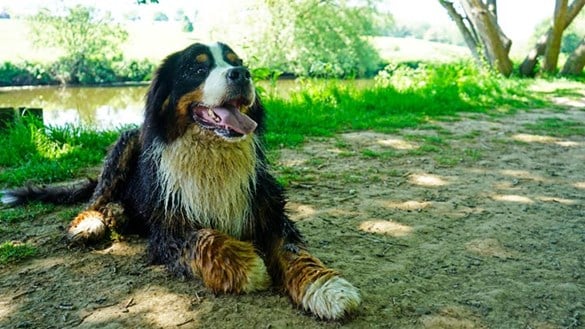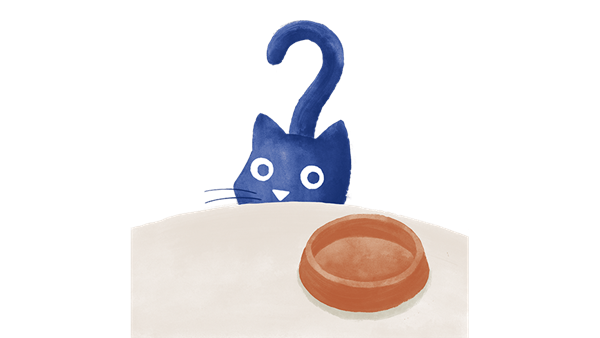About Blue-Green Algae Poisoning
Protecting your pets from blue-green algae poisioning
Blue-green algae can be highly toxic to pets, causing fatal liver damage and long-term health conditions. Read about how to protect your pet this summer.

What is blue-green algae?
Despite the name, blue-green algae isn’t actually an algae - it’s a type of bacteria that clumps together in bodies of standing freshwater, such as ponds and lakes.
This bacteria tends to build up during periods of hot weather with less rainfall, although it can occur throughout the year.
It can be highly toxic to pets (although dogs are at a higher risk), causing fatal liver damage and long-term health problems.
How to spot blue-green algae
High volumes of bacteria can form ‘blooms’ which can be visible in water, creating the look of pea soup.
 Blue-green algae blooms can also look like:
Blue-green algae blooms can also look like:
- Clumps of greenish-brown flakes
- Greenish bundles
- Brown dots
- A blue-green scum on the water’s surface
- Foam-like blooms around the water’s edge
There may be warning signs to let you know that the pond or lake is contaminated, and in highly toxic instances, you may see dead fish on the surface.
It’s also important to remember that blue-green algae can also be found in any stagnant water sources, including garden ponds, pots, bird baths, and water fountains, which is where cats can come into contact with it. Ensure that your garden is a safe place for a thirsty cat to wander.
Why is blue-green algae dangerous?
Blue-green algae produces harmful toxins which can affect your pet’s liver if ingested.
 Exposure to blue-green algae is often fatal, and can cause long-term health problems in pets even if they survive. By drinking from or swimming in contaminated water, pets are at a very high risk of becoming seriously ill and must be taken to a vet immediately.
Exposure to blue-green algae is often fatal, and can cause long-term health problems in pets even if they survive. By drinking from or swimming in contaminated water, pets are at a very high risk of becoming seriously ill and must be taken to a vet immediately.
What are the symptoms?
The symptoms of blue-green algae poisoning are:
- Vomiting/being sick
- Diarrhoea
- Seizures/fitting
- Weakness/collapse/unconsciousness
- Disorientation/confusion
- Excessive drooling
- Breathing difficulties
If you suspect your pet has been in contact with blue-green algae, or if they show any of these symptoms after entering water, you should see a vet straight away. Although there’s no antidote to the toxins, your vet will attempt to flush them out of the body before they take hold.
Protecting your pet
To protect your pet from the dangers of blue-green algae, keep them well away from any lakes or ponds that you know or suspect to be contaminated. This is even more important when rain has been in short supply.
Providing an alternative water source, like a travel water bowl, for dogs on walks can help prevent them from drinking from contaminated lakes or ponds.
Always thoroughly wash your dog after they’ve been swimming in any natural water source, and keep bird baths and other small areas of standing water clean and fresh.If you believe your pet has been in contact with blue-green algae or is showing any of the above symptoms, please contact your nearest Medivet practice.

Pet Care & Advice
At Medivet, we’re committed to providing trustworthy, expert advice that helps you care for your pet.
Search advice

